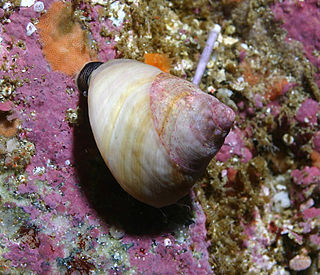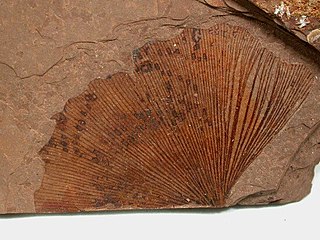Paulchoffatiidae is a family of extinct mammals that lived predominantly during the Upper Jurassic period, though a couple of genera are known from the earliest Cretaceous. Some undescribed fossils from the Middle Jurassic of England may represent earlier versions. Remains have been reported from Portugal, Spain and England. Paulchoffatiids were members of the order Multituberculata. They were relatively early representatives and are within the informal suborder of "Plagiaulacida". The family was named by G. Hahn in 1969, and it honors the Portuguese geologist Léon Paul Choffat. Two subfamilies are recognized.

Salamandridae is a family of salamanders consisting of true salamanders and newts. Salamandrids are distinguished from other salamanders by the lack of rib or costal grooves along the sides of their bodies and by their rough skin. Their skin is very granular because of the number of poison glands. They also lack nasolabial grooves. Most species of Salamandridae have moveable eyelids but lack lacrimal glands.

Sabal is a genus of palms endemic to the New World. Currently, there are 17 recognized species of Sabal, including one hybrid species. The species are native to the subtropical and tropical regions of the Americas, from the Gulf Coast/South Atlantic states in the Southeastern United States, south through the Caribbean, Mexico, and Central America to Colombia and Venezuela. Members of this genus are typically identified by the leaves which originate from a bare, unarmed petiole in a fan-like structure. All members of this genus have a costa that extends into the leaf blade. This midrib can vary in length; and it is due to this variation that leaf blades of certain species of Sabal are strongly curved or strongly costapalmate or weakly curved, weakly costapalmate,. Like many other palms, the fruit of Sabal are drupe, that typically change from green to black when mature.

Tarsiiformes are a group of primates that once ranged across Europe, northern Africa, Asia, and North America, but whose extant species are all found in the islands of Southeast Asia. Tarsiers are the only living members of the infraorder, and also include the extinct Tarsius eocaenus from the Eocene and Tarsius thailandicus from the Miocene. Two extinct genera, Xanthorhysis and Afrotarsius, are considered to be close relatives of the living tarsiers and are generally classified within Tarsiiformes, with the former grouped within family Tarsiidae and the latter listed as incertae sedis (undefined). Omomyids are generally considered to be extinct relatives, or even ancestors, of the living tarsiers and are often classified within Tarsiiformes. Other fossil primates, which include Microchoeridae, Carpolestidae, and Eosimiidae, have been included in this classification, although the fossil evidence is debated. Eosimiidae has also been classified under the infraorder Simiiformes. Likewise, Carpolestidae is often classified within the order Plesiadapiformes, a very close, extinct relative of primates. These conflicting classifications lie at the heart of the debate over early primate evolution. Even the placement of Tarsiiformes within suborder Haplorhini is still debated.

The guitarfish are a family, Rhinobatidae, of rays. The guitarfish are known for an elongated body with a flattened head and trunk and small, ray-like wings. The combined range of the various species is tropical, subtropical, and warm temperate waters worldwide.

Miacids are extinct primitive carnivoramorphans within the family Miacidae that lived during the Paleocene and Eocene epochs, about 62–34 million years ago. Miacids existed for approximately 28 million years.

Huttonia is a monotypic genus of ecribellate South Pacific araneomorph spiders in the Huttoniidae family containing the single species, Huttonia palpimanoides. Although only one species is described, there are still about twenty more undescribed species.

The genus Megachile is a cosmopolitan group of solitary bees, often called leafcutter bees or leafcutting bees; it also includes the called resin bees and mortar bees. While other genera within the family Megachilidae may chew leaves or petals into fragments to build their nests, certain species within Megachile neatly cut pieces of leaves or petals, hence their common name. This is one of the largest genera of bees, with more than 1500 species in over 50 subgenera. The introduced alfalfa leafcutter bee is managed for crop pollination in various regions around the world.

Corbicula is a genus of freshwater and brackish water clams, aquatic bivalve mollusks in the family Cyrenidae, the basket clams. The genus name is the New Latin diminutive of Latin corbis, a basket, referring to the shape and ribs of the shell. In many Asian countries, these clams are used as ingredients for soup. In South Korea, there is popular soup made of these species of clams known as 재첩국 (jaechup-guk).

Cretornis is a pterosaur genus from the late Cretaceous period of what is now the Jizera Formation of Czechia, dating to about 92 million years ago. It only contains a single species, Cretornis hlavaci.

Trochoidea is a superfamily of small to very large vetigastropod sea snails with gills and an operculum. Species within this superfamily have nacre as the inner shell layer. The families within this superfamily include the Trochidae, the top snails. This superfamily is the largest vetigastropodan superfamily, containing more than 2,000 species.

Ginkgo is a genus of highly unusual non-flowering seed plants. The scientific name is also used as the English name. The order to which it belongs, Ginkgoales, first appeared in the Permian, 270 million years ago, and is now the only living genus within the order. The rate of evolution within the genus has been slow, and almost all its species had become extinct by the end of the Pliocene; the exception is the sole living species, Ginkgo biloba, which is only found in the wild in China, but is cultivated around the world. The relationships between ginkgos and other groups of plants are not fully resolved.

Bolinus is a genus of sea snails, marine gastropod mollusks in the family Muricidae, the murex snails or rock snails.

Rhizostomatidae is a family of cnidarians in the class Scyphozoa.

Cimbex is a genus of sawflies in the family Cimbicidae.
Alfred Nicholson Leeds was an English amateur palaeontologist.

Schizaster is a genus of heart urchins belonging to the family Schizasteridae. The type species of the genus is Schizaster studeri.

Stylina is a genus of extinct stony corals.

Plesiastraea is a genus of corals. It is the only genus in the monotypic family Plesiastreidae.
Trochocyathus is a genus of corals in the family Caryophylliidae. Living species are found in waters near Hawai'i at depths of 64 to 1,020 meters. Fossil species are found as far back as the latest Paleocene in the Dilwyn Formation of Australia, in the late Cretaceous in the Woodbury Formation of New Jersey, and in Suffolk.

















